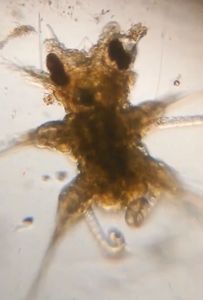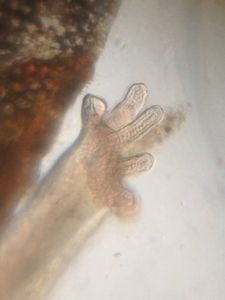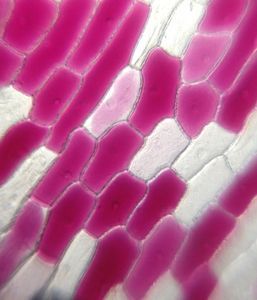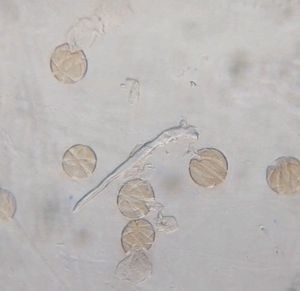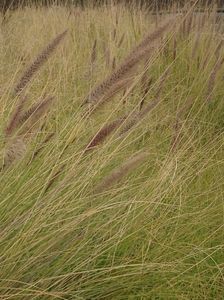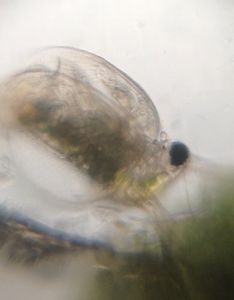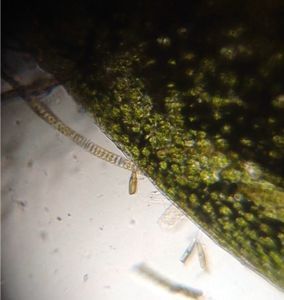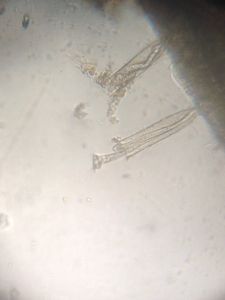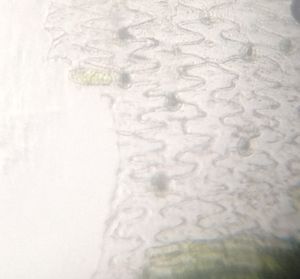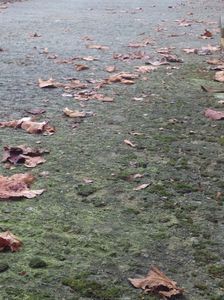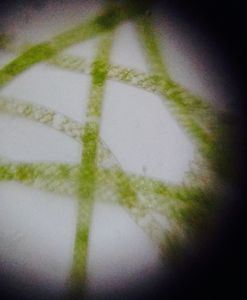Microjewels.
 Dec 06, 2016 • 3:23 AM UTC
Dec 06, 2016 • 3:23 AM UTC Unknown Location
Unknown Location 140x Magnification
140x Magnification Microorganisms
Microorganisms
Cristina
Learn about the author...
19posts
52comments
1locations
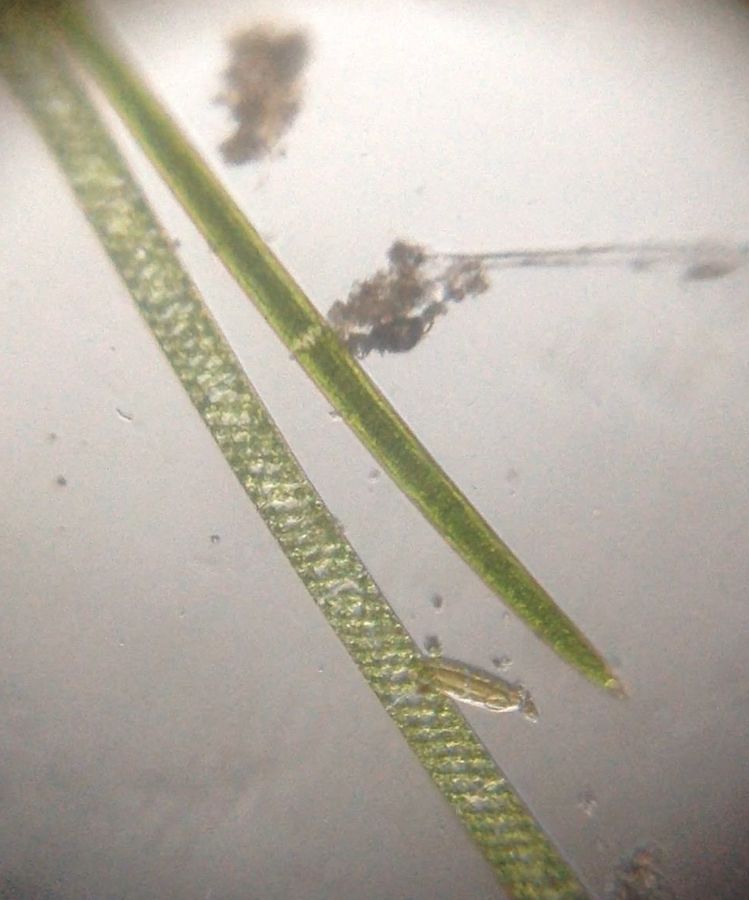
Microscopic algae render my fascination every time I have the chance to observe them . Instantly, I feel the need to pause for a while and to regard admiringly not only their capability to transform inorganic matter (carbon dioxide, mostly) into organic molecules (glucose, for instance) and their active production of oxigen, but also their exquisite beauty.
After viewing the previous image, you probably might have recognised two specimens that have been shown for several times on microcosmos.foldscope, that is, Spirogyra spp and a diatom species. The third one, the one on top, is Closterium spp. Watch this graceful trio in the broken silence of their supportive environment.
After viewing the previous image, you probably might have recognised two specimens that have been shown for several times on microcosmos.foldscope, that is, Spirogyra spp and a diatom species. The third one, the one on top, is Closterium spp. Watch this graceful trio in the broken silence of their supportive environment.
Genus Closterium includes species that resemble rods or crescents. It is a desmid, I mean, a single celled green algae living in fresh water whose name is related to the fact that it is made of two halves being mirror images of one another. Therefore, it is symmetrical. This symmetry leads to beautiful shapes and make every desmid aesthetically so appealing that I would like to invite you, if you have the chance to find them (they are worldwide), to make posts so that we can share the variety of genus and their artistic elegance.
Where the two halves join, the cell usually narrows (not in our specimen). This is exactly where the nucleus is located. Normally two chloroplasts project from this point and provide a marvelous green color to our eyes. Starch is synthesized in them, specifically in the dark patches seen next:
Where the two halves join, the cell usually narrows (not in our specimen). This is exactly where the nucleus is located. Normally two chloroplasts project from this point and provide a marvelous green color to our eyes. Starch is synthesized in them, specifically in the dark patches seen next:
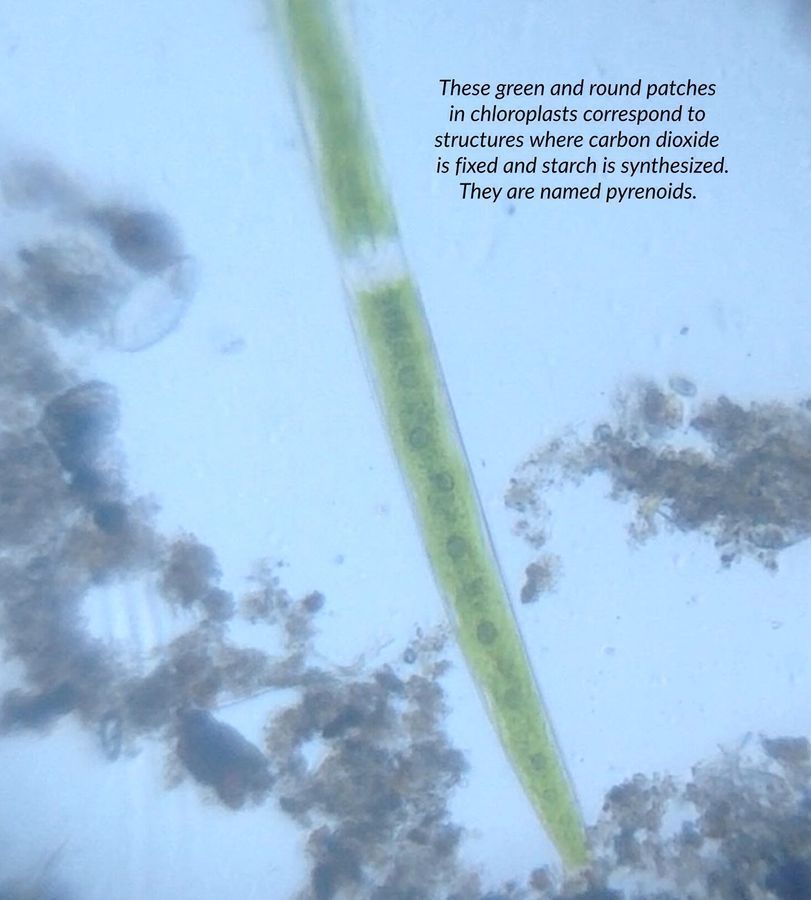
Closterium has also one curious feature: one vacuole (organelles containing different substances -water, pigments etc. – ) on each end of the cell. They are patent in the next video, where you can also see this algae moving as if it were sliding gracefully (locomotion is caused by secretion of mucilage from pores in the cell wall).
They live in clear waters. This is where I found them:
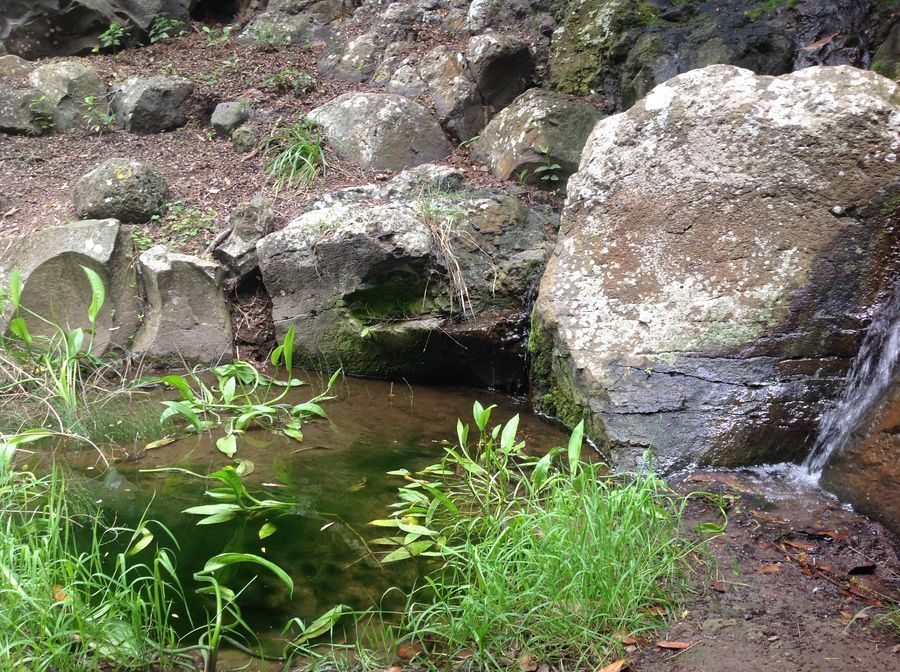
Another unicellular algae I have recently had the opportunity to foldscope is Phacus spp. It is not a desmid but an euglenoid. It exhibits certain features I would like to share with you. Firstly, its shape: it looks like a delicate leaf, moving softly in fresh water.
Secondly, its eye spot, a red dot it uses for light detection. Watch the following video, please (I zoomed in):
Here is a drawing to figure it better:
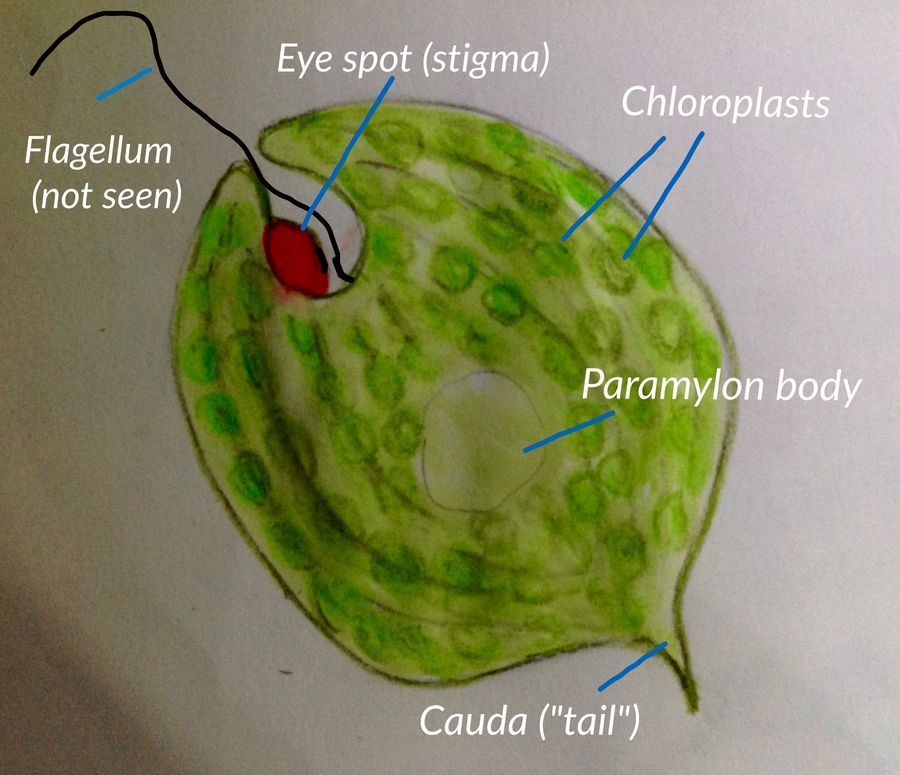
Paramylon bodies contain a substance similar to starch, but its chemical structure is slightly different (as a biologist, it is an amazing feature).
All in all, these are only two examples of unicellular algae: a sand grain in a vast desert. Therefore, let us unveil its splendor using our foldscopes!
Cristina Bosch
All in all, these are only two examples of unicellular algae: a sand grain in a vast desert. Therefore, let us unveil its splendor using our foldscopes!
Cristina Bosch
Sign in to commentNobody has commented yet... Share your thoughts with the author and start the discussion!
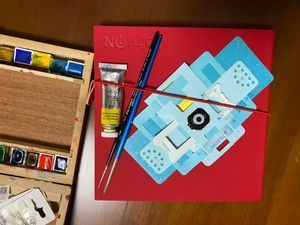
 0 Applause
0 Applause 0 Comments
0 Comments

